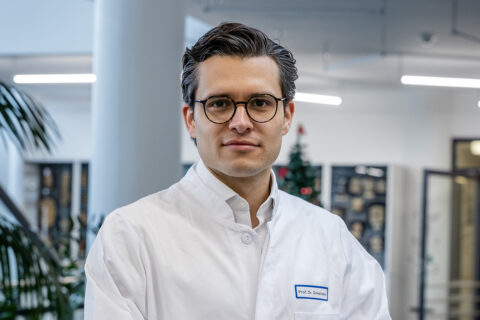Super code cracked: Central inflammation system discovered

Important mechanism for a wide range of different types of inflammation and autoimmune diseases
The most common immune cells in our bodies that form the front line in the immune system’s defenses against infections are neutrophilic granulocytes. At the same time, neutrophils are also involved in a number of different inflammatory processes and autoimmune diseases. An international team led by Prof. Dr. Ricardo Grieshaber-Bouyer at the Department of Medicine 3 – Rheumatology and Immunology, and Deutsches Zentrum Immunmedizin (DZI) at Universitätsklinikum Erlangen have now identified a key inflammation program that is initiated in neutrophils in connection with a wide range of inflammatory processes and autoimmune diseases. This opens the door to a new approach for diagnosing and treating inflammation. The results have been published in the journal Nature Communications.
Neutrophilic granulocytes can vary greatly in appearance and have many different functions. The previous results of Prof. Ricardo Grieshaber-Bouyer’s working group indicate that the wide variety of neutrophilic granulocytes is due to them adapting in different ways depending on tissues and inflammatory stimuli. The team of researchers have now developed an approach for analyzing the gene expression of cells in humans and in other species. In the first instance, they were able to demonstrate that while resting, the cell codes of the immune cells of human and animals are extremely similar. Based on these findings, the researchers investigated how activated neutrophils differ from resting cells in various types of inflammation. Here, the researchers observed that in spite of all the differences in the various types of tissue and states of disease, there is a central inflammation program consisting of genes that can be observed in a wide range of different inflammatory conditions.
This is a significant finding that is beneficial for maximizing knowledge about human health and creating seamless transitions between experimental and clinical research that will directly benefit patients. “The inflammation program we have identified can be seen as a gauge for the activation of neutrophils,” explains Ricardo Grieshaber-Bouyer, “and in the case of patients suffering from a COVID-19 infection, for example, was associated with the severity of the disease.”
Finally, the researchers were able to prove that the DNA sections containing the inflammation program open up while the neutrophils are being developed and migrating to the tissue, before the cells meet with more pronounced inflammatory stimuli. This ensures that neutrophils are well prepared to read the genes of this inflammation program. These findings suggest the importance of measuring inflammation in the body and open up new approaches for tackling infections and chronic inflammation.
Link to original publication: https://www.nature.com/articles/s41467-023-43573-9
Further information:
Prof. Dr. Ricardo Grieshaber-Bouyer
Professor of Clinical System Immunology
Phone: +49 9131 85 39109